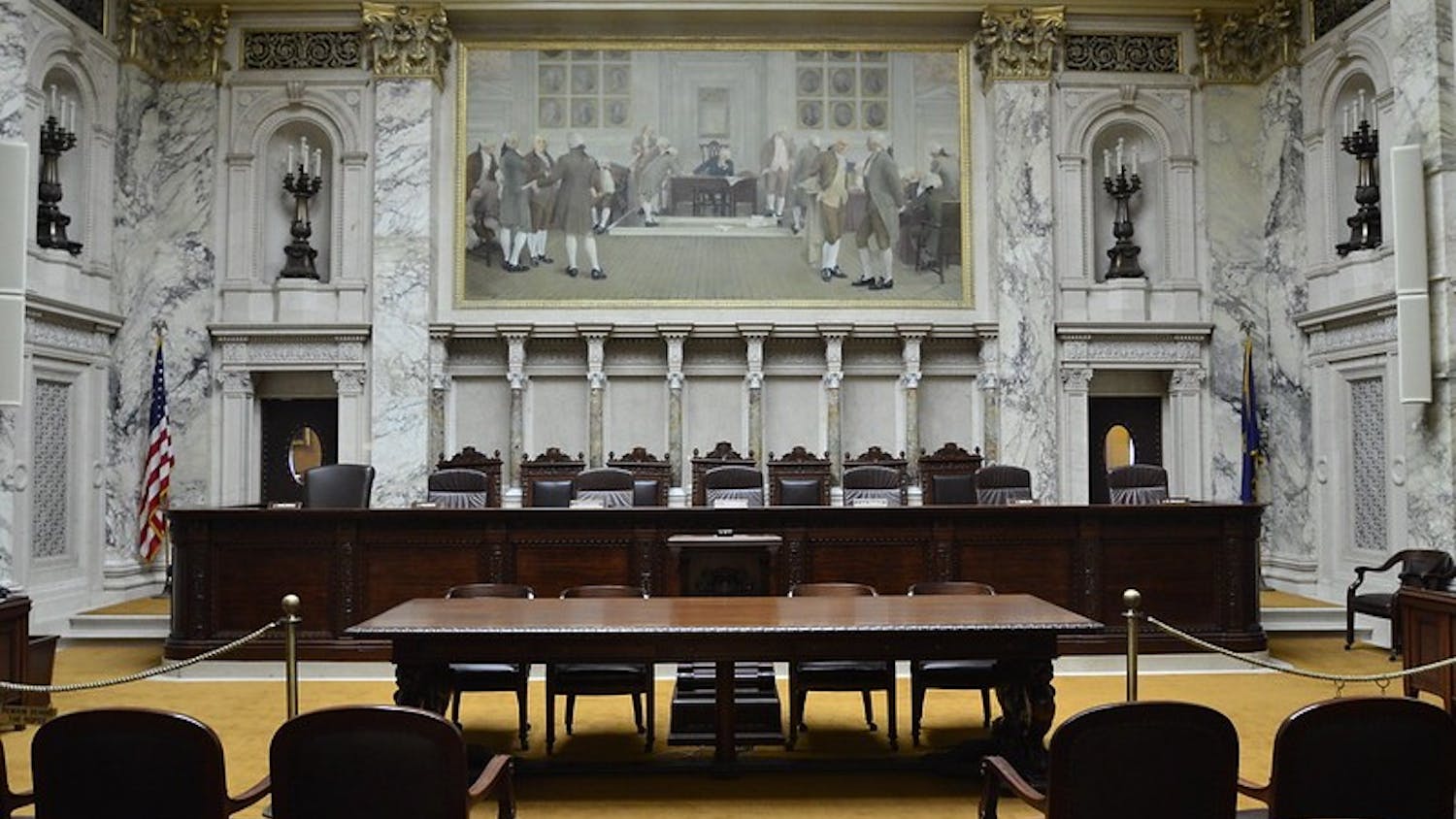In just four days, the new Union South will open on campus and students will, for the first time, have a second functional, attractive union. But as one project closes, another opens for the Union. Plans have been in the works for years now for renovations to Memorial Union.
To be completed in two phases (the west theatre wing and east wing), the Memorial Union renovations are necessary to ensure the building remains a viable facility for students in the 21st century.
Built in 1928, Memorial Union has long been a prominent fixture on this campus. But now, renovation plans threaten to ruin the integrity and appeal of the structure.
And little blame for that falls on the Union. As part of the renovation, architects are required to follow strict guidelines recommended by the US Department of the Interior and negotiated by the State Historical Society of Wisconsin.
These rules are put into place to ensure renovated buildings do not lose their historical integrity.
""New additions, exterior alterations, or related new construction shall not destroy historic materials that characterize the property. The new work shall be differentiated from the old and shall be compatible with the massing, size, scale and architectural features to protect the historic integrity of the property and its environment.""
And herein lies the problem. As Memorial Union renovation committee members informed me and other community members at a public preliminary design two weeks ago, one of the biggest needs for the new Memorial Union lies within the theatre. Built separately from the original structure in 1939, the theater is in need of modern upgrades.
Among those upgrades needed is expanded lobby space. In today's theaters, people want to socialize, order food or get drinks before shows and during intermissions. Most modern theatres, such as Madison's Overture Center, have expansive lobbies to accommodate this socializing (and not to mention an added revenue stream).
The current Wisconsin Union Theater lobby, meanwhile, packs people like sardines just to get into and out of shows. There's little argument in my mind—the need for expanded lobby space is necessary.
However, because of those regulations that say new additions to historic buildings must appear visibly different from the original structure, the plans for this new lobby space have come out awkward at best, and downright jarring at worst.
This is no attack on the architects who designed the new space. Considering the restrictions presented to them, they did OK. But as I expressed to multiple representatives from the committee, the current designs threaten to destroy the entire integrity of the Union.
I was not alone in these critiques. Many community members present at the forum expressed very similar feelings. And interestingly enough, so did the design committee members.
Although they demonstrated eagerness to work with the Historical Society, they still appeared frustrated by the limitations. They seemed ready to jump on any opportunity to reform the plans if given more leeway from the Historical Society.
I understand where these guidelines originate. To simply cover up and hide a historic structure with a new addition would be an awful idea. These rules are in place to make sure historic buildings maintain their original feeling and integrity.
In this case however, these rules do nothing but the opposite.
Take into consideration, for example, Bascom Hall—another beloved campus building. The original structure, built in 1859, included only the middle portion of the building. In 1895 a south wing was added and in 1906, a north wing. Can you imagine what would have become of Bascom had architects then been forced to design ""differentiated"" additions?
Instead, we have a structure today that is unified and better for it.
A representative from the State Historical Society of Wisconsin declined to comment, citing ongoing negotiations with the Union. But that's just it—this should be a negotiation, a dialogue between both sides to produce the best possible outcome. And so far, that has not happened.
The guidelines state that although new additions must be differentiated, they must also be compatible. In the current situation, differentiation was taken too far without enough consideration for compatibility.
Given a better opportunity at compatibility, architects could complete a more logical and appealing lobby design for the theatre—one that would allow the structure to maintain its history without destroying its appeal.
There are over 400,000 current UW-Madison students and living alumni around the world today. I am willing to assume that many of them would hold fast to the Memorial Union as one their most treasured structures on campus.
So, on behalf of those 400,000 I send out an urgent plea to the State Historical Society of Wisconsin: Please keep an open mind throughout negotiations for the Memorial Union project. Please understand when these rules begin to do more harm than good—keep in mind what the overall intention of historical preservation means. Please do not force design committee members into making decisions that will, undoubtedly, destroy the integrity of our beloved Union.
Mark Bennett is a sophomore majoring in journalism and political science. Please send all feedback to opinion@dailycardinal.com.






